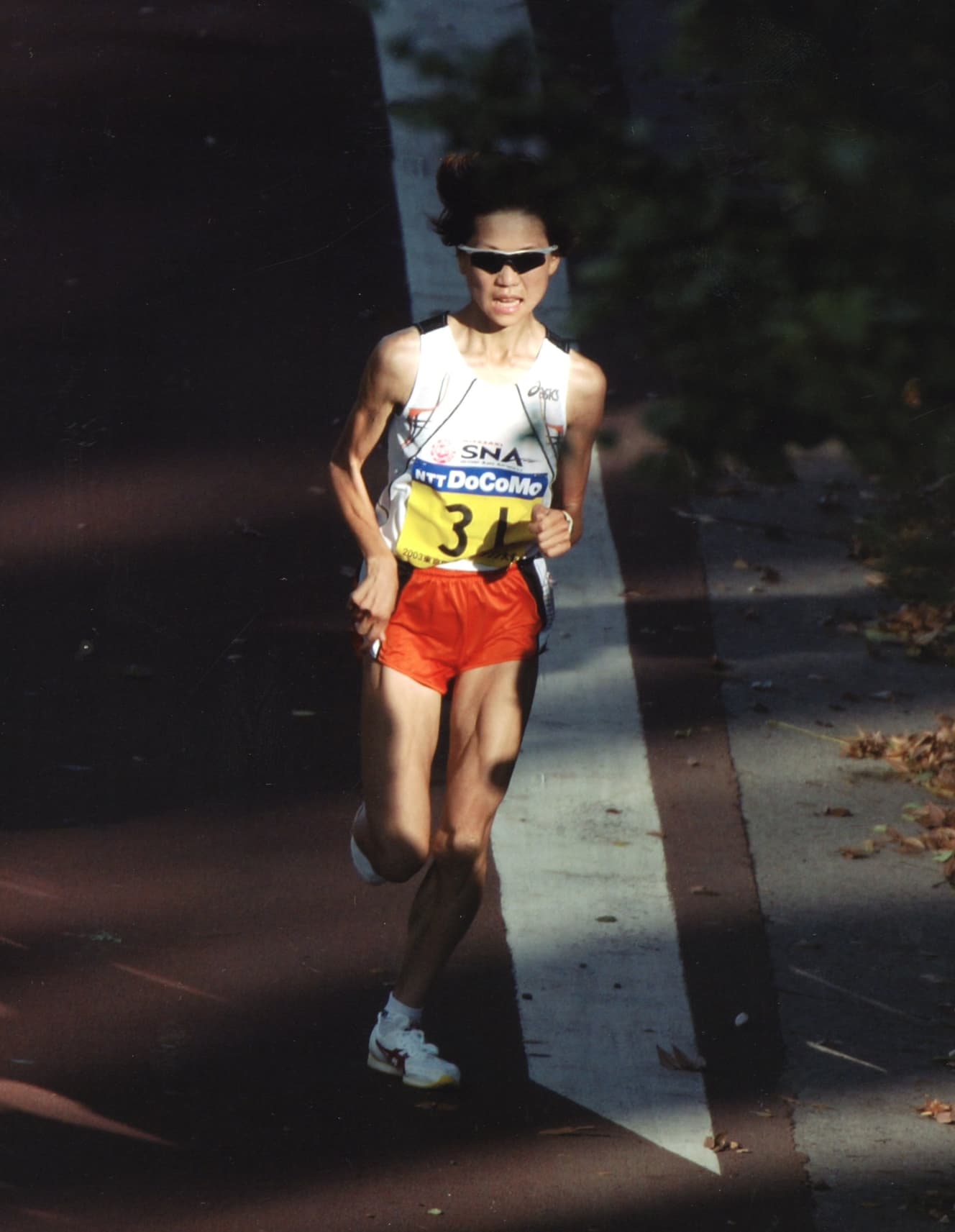Playback ’03] Naoko Takahashi’s dream of a second consecutive Olympic victory in Athens was crushed at the “moment” when the theory that she had reached her limit emerged.

What did “FRIDAY” report 10, 20, and 30 years ago? In this edition of “Playback Friday,” we take a look back at the topics that were popular at the time. This time, we bring you the article from the December 5, 2003 issue, which was published 20 years ago, “Exclusive direct hit on the ‘Limit Theory’: Naoko Takahashi ‘Can’t run anymore! Naoko Takahashi (31 at the time) is a Japanese woman who has been running for over 20 years.
Naoko Takahashi (31 at the time) won the women’s marathon at the 2000 Sydney Olympics, bringing Japan’s women’s track and field world its first gold medal and earning her the National Medal of Honor. In the Berlin Marathon the following year, she became the first woman to set a new world record (at the time) with a time of 2 hours, 19 minutes, and 46 seconds, under 2 hours and 20 minutes, and she also won the Berlin Marathon the following year for the second consecutive time, making it six consecutive marathon victories.
Although she missed the World Championships due to injury the previous year, Takahashi had her sights set on the Tokyo International Women’s Marathon, which would be the selection race for the Athens Olympics the following year. Before the race, Takahashi said she was in perfect physical condition and was expected to win by a landslide, but she was defeated by Alem (then 28, Ethiopia) and finished in second place. We caught up with Takahashi after the match at …….
Playback! The day the “Q-chan myth” collapsed
–Thank you very much for your hard work.
Yes, thank you.
–Good luck in the next round.
“Yes? Next time? Next time, she said.
When Naoko Takahashi appeared at a hotel in Tokyo at 6 p.m. on November 16, she left meaningful words in response to a direct interview by this magazine’s reporter at the entrance and disappeared into her room with a chuckle.
Takahashi, who was considered the clear winner of the Tokyo International Women’s Marathon that afternoon, was beaten by Alem (28, Ethiopia) and finished in second place with a time of 2 hours, 27 minutes, and 21 seconds. When Takahashi took the lead in the first half of the race, everyone thought it would be a “solo journey” as usual. However, before the 30-km mark, he suddenly stalled out. While fans were in disbelief, Alemu passed him at around 39 km, and in the end, he entered the stadium at a leisurely pace. At the finish line, he opened his arms and smiled, but it was a “breaking point” moment that destroyed the myth of “Q-chan.
There was much speculation as to the cause of the defeat, such as a failure to adjust. What was certain was that the disastrous defeat made it extremely difficult for the team to qualify for the Athens Olympics. There were two remaining selection races, the Osaka International in January and the Nagoya International in March, and a good result in either of them would have given Takahashi a chance.
However, Takahashi declined to say at his press conference on January 17 whether he would compete in Osaka or Nagoya, because at 31 years of age, he would have to run three races in a short period of time if he was selected for Athens, which would be difficult in practice. However, as Takahashi said at the beginning of the interview, he himself seemed to be reluctant.
On the 18th, this magazine again directly interviewed Takahashi when she came out of a relaxation salon after she had left the hotel alone, and asked her about her future.
I’m in a capsule right now, listening to music and relaxing. I talked with the director this morning, but I haven’t decided when I will run again. I am not burnt out. I will not stop running marathons. From now on, I think I will train with Mr. Chiba, who runs in Osaka, on Tokunoshima. What? But how did you know I was here! Then I should have worn proper make-up!
Takahashi showed us a bright “Q-chan smile. Takahashi says he has no doubt in his mind that he wants to run. Should he gamble on the selection race or just sit back and wait?
In the end, Takahashi did not compete in the next year’s selection race, and the Athens Olympics team consisted of Mizuki Noguchi, Reiko Tosa, and Naoko Sakamoto. However, as Takahashi told this magazine, she had not given up running. She continued to run and won the Tokyo International Women’s Marathon in 2005, taking her revenge. This was her last marathon victory in her active career after her retirement in 2008.
PHOTO: Shuntaro Abe (1st), Shinya Inui/AJPS

